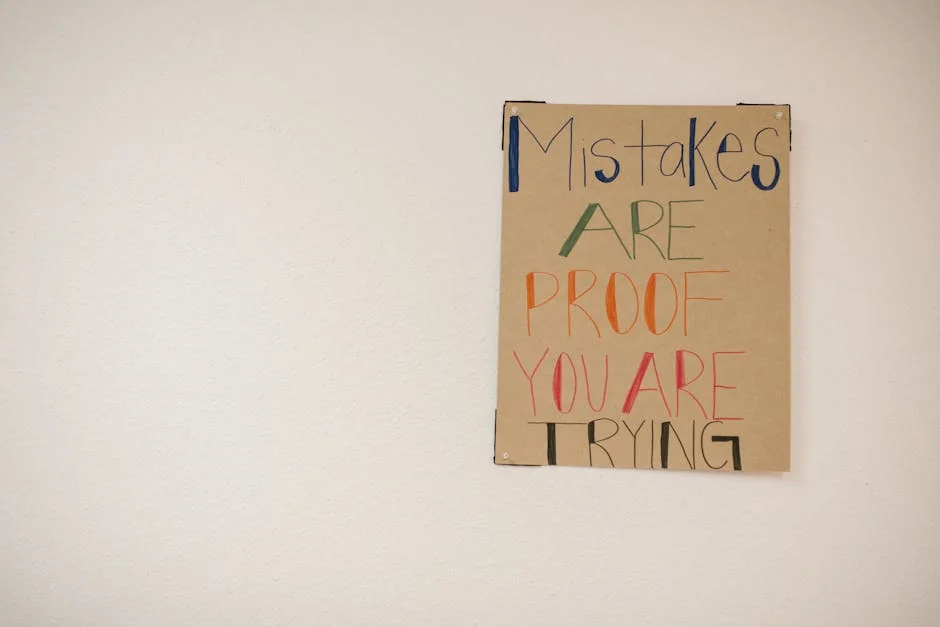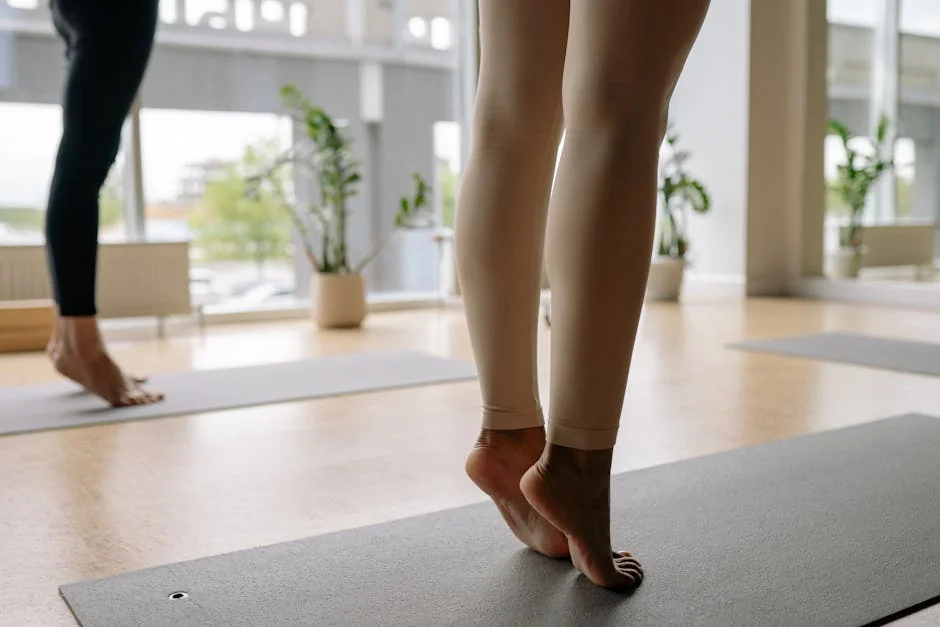You’ve heard about the life-changing benefits of mindfulness, but when a friend asks you to define it, your mind goes blank. You find yourself searching for that perfect, concise explanation—the essence of mindfulness in a sentence. It seems like it should be simple, yet capturing its profound depth in a few words is surprisingly difficult. This quest for a simple definition is where every great mindfulness journey begins. In this guide, we will not only deliver that powerful one-sentence definition but also pull back the curtain on its true meaning. Get ready to move beyond the words and discover how this simple concept can transform your daily life, from managing stress to truly savoring the present moment. Let's unlock the practice behind the phrase.
What is Mindfulness? The Core Sentence Explained
The search for a single, all-encompassing sentence ends here. While many beautiful definitions exist, one from Jon Kabat-Zinn, a pioneer in bringing mindfulness to the West, captures its essence with clarity and precision.
Mindfulness is the basic human ability to be fully present and aware of where we are and what we’re doing, without being overly reactive or overwhelmed by what’s going on around us.
This sentence is the foundation. To truly understand it, we need to deconstruct its three powerful components.
"Fully Present and Aware"
This is the anchor of the entire practice. Being "fully present" means your attention is resting on the reality of this exact moment, not lost in thoughts about the past or future. It’s the act of noticing the physical sensation of your feet on the floor right now, the sound of the air conditioner humming, or the taste of your coffee. "Awareness" is the conscious knowing of these experiences. It’s the part of you that observes the thoughts and feelings as they arise, without necessarily getting tangled in them.
"Without Being Overly Reactive"
This is the element of non-judgmental observation. Normally, when a stressful thought or uncomfortable feeling arises, we automatically react. We might criticize ourselves for having the feeling, or immediately lash out. Mindfulness invites you to insert a crucial pause between the trigger and your response. In that pause, you can simply note, "There is anger," or "There is anxiety," without buying into the story it tells or judging it as "bad." This is a key component of mindfulness and letting go. You observe the weather pattern of your mind without getting swept away by the storm.
"Without Being... Overwhelmed"
This is the cultivation of equanimity—a sense of balance and stability. Life will always present challenges and stressors. Mindfulness doesn’t eliminate them; it changes your relationship with them. By practicing non-reactive awareness, you build an inner resilience that allows you to face difficult situations without feeling completely consumed or knocked off your center. It’s like learning to float in the ocean instead of fighting frantically against every wave.
Beyond the Definition: Why a Single Sentence Isn't Enough
Understanding the sentence is like reading a recipe; practicing mindfulness is like tasting the cake. The definition provides a perfect map, but the territory itself is your direct experience. The gap between knowing the words and living the state is where the real transformation occurs.
Think of it this way: you can understand the concept of "balance" intellectually, but that doesn't mean you can instantly ride a bicycle. It requires practice, falling off, and getting back on. Mindfulness is the same. It’s a mental muscle that must be consistently trained.
The core of this training lies in moving from a state of autopilot to one of conscious awareness. Most of our day is spent on autopilot—brushing our teeth while planning our day, eating lunch while scrolling through emails, driving home while rehearsing a conversation. We are physically present but mentally absent. Mindfulness is the gentle effort to switch off the autopilot and bring a curious, kind attention to the activities we normally rush through.
This is where concepts like present moment awareness and non-judgmental observation become your tools. They are not just phrases; they are active skills. When you intentionally feel the warmth of the water in the shower, you are building your present moment awareness muscle. When you notice yourself feeling impatient in a line and, instead of feeding the frustration, you simply acknowledge it with a sigh, you are strengthening your non-judgmental observation. The sentence defines the destination, but these practices are the steps you take to get there.
How to Practice Mindfulness: From Sentence to Experience
Knowing the definition of mindfulness is the starting block. The real race begins when you learn how to apply it. Here are four foundational techniques to bridge the gap between theory and lived experience.
The Breath as an Anchor
Your breath is the most portable and always-available tool for mindfulness. It’s a constant rhythm in your body, serving as a perfect anchor to the present moment.
- Find a Comfortable Position: Sit or lie down in a quiet place. You can close your eyes or soften your gaze.
- Tune Into the Sensation: Bring your attention to the physical feeling of your breath. Notice the cool air entering your nostrils and the slightly warmer air leaving. Feel your chest or abdomen rise and fall.
- Observe Without Controlling: There’s no need to force or change your breath. Simply observe it as it is. Your mind will wander—this is completely normal and expected.
- Gently Guide It Back: The moment you realize your mind has drifted into thought, gently and kindly guide your attention back to the sensation of the breath. This act of noticing and returning is the practice.
The Body Scan for Grounding
This practice is excellent for connecting with physical sensations and pulling your awareness out of your busy mind and into your body.
- Get Settled: Lie on your back on a comfortable surface with your arms resting at your sides.
- Bring Attention to Your Feet: Direct your focus to your toes. Notice any sensations there—tingling, warmth, the feeling of your socks against your skin. There is no "right" thing to feel.
- Systematically Move Upward: After a few moments, slowly move your attention to your heels, then your ankles, calves, knees, and so on, all the way up to the top of your head.
- Observe with Curiosity: Approach each body part with a sense of curiosity. If you notice tension or numbness, simply observe it without judgment. The goal is not to change it, but to be aware of it.
Mindful Eating: A Practical Exercise
This practice can transform a daily routine into a rich, sensory experience, pulling you directly into present moment awareness.
- Choose Your Food: Select a small piece of food, like a raisin, a berry, or a small piece of chocolate.
- Engage Each Sense: Before eating, explore the food with your senses. Look at its color and texture. Feel its surface. Smell its aroma.
- Place it in Your Mouth: Place the food in your mouth without chewing immediately. Notice the sensations on your tongue.
- Chew Slowly and Deliberately: Begin to chew slowly. Pay attention to the release of flavors, the changing texture, and the sounds.
- Notice the Impulse to Swallow: Observe the intention to swallow before you do it. Follow the sensation of the food moving down your throat.
Noting Your Thoughts and Feelings
This technique directly cultivates non-judgmental observation of your mental activity, helping you see thoughts as passing events rather than absolute truths.
- Sit in Meditation: Begin with a few minutes of focusing on your breath.
- Label Thoughts and Feelings: As thoughts, emotions, or sensations arise, gently acknowledge them with a simple, soft mental label.
- A planning thought arises: Note "planning."
- A feeling of restlessness: Note "restlessness."
- A memory appears: Note "remembering."
- An ache in your back: Note "sensation."
- Return to Your Anchor: After softly applying the label, gently disengage from the thought or feeling and return your attention to your breath. The note is not an analysis; it's a way of acknowledging and letting go.
Common Challenges and How to Overcome Them
As you begin your practice, you will inevitably encounter hurdles. Recognizing them as a normal part of the process is the first step to moving through them.
"I Can't Stop My Thoughts." This is the most common misconception. The goal of mindfulness is not to empty your mind. The goal is to change your relationship with your thoughts. The very act of noticing that you are lost in thought is a moment of profound mindfulness. Every time you gently guide your attention back, you are doing it correctly.
"I Get Too Impatient or Bored." Impatience and boredom are simply other states of mind to observe. When you feel them, you can note, "impatience," or "boredom," and investigate the physical sensations that accompany them. Where do you feel impatience in your body? What does boredom actually feel like? This curious investigation transforms resistance into practice.
"I Don't Have Time." Formal meditation is wonderful, but you can integrate mindfulness into any activity. For those with a busy schedule, a quick mindfulness meditation can be a perfect way to reset in just a few minutes. Try brushing your teeth with your full attention. Feel the steering wheel of your car during your commute. Listen intently to the sounds around you for one minute. Weaving these "micro-practices" throughout your day is often more sustainable and impactful than trying to find 30 spare minutes.
Integrating Mindfulness into Your Daily Life
The ultimate aim is to let mindfulness infuse your entire day, moving beyond the meditation cushion into the chaos and beauty of everyday living.
Mindful Morning Routine: Choose one part of your morning—making your coffee, showering, getting dressed—and commit to doing it with your full attention, engaging all your senses.
Mindful Walking: Whether you're walking to your car or through a park, feel the soles of your feet connecting with the ground. Notice the rhythm of your steps and the feeling of the air on your skin.
The STOP Method for Stress: When you feel stressed or overwhelmed, pause and:
- Stop what you are doing.
- Take a breath.
- Observe your body, thoughts, and emotions.
- Proceed with more awareness and intention.
Mindful Listening: In your next conversation, try to listen completely without planning what you are going to say next. Notice the other person's tone, expressions, and the meaning behind their words.
The Ripple Effects of a Consistent Practice
When you move beyond just the definition and commit to the practice, the benefits ripple out into every corner of your life. This isn't about adding another task to your to-do list; it's about changing the quality of how you live each moment.
You may notice a greater capacity to handle stress without unraveling. You might find yourself pausing before sending a reactive email, leading to more thoughtful communication. Simple pleasures—a sunset, a warm cup of tea, a laugh with a friend—can become more vivid and satisfying because you are truly there to experience them. This journey often deepens one's sense that meditation is a practice in self acceptance, fostering a kinder relationship with yourself. You begin to live your life with more intention and less reaction, guided not by autopilot, but by a calm, clear awareness.
The journey of understanding mindfulness in a sentence is complete, but your personal journey with the practice is just beginning. If you're looking for more structured guidance, exploring mindfulness meditation tips can provide valuable next steps. Start small, be kind to yourself when your mind wanders, and remember that each moment of conscious awareness is a step toward a more present, peaceful, and engaged life.
In essence, the practice of mindfulness is the simple yet profound act of anchoring our awareness in the present moment without judgment. This comprehensive exploration has underscored that its power lies not in complex theory, but in practical, consistent application. The key takeaways are clear: mindfulness is an accessible tool for anyone, requiring only a few minutes and a willingness to observe one's thoughts and sensations. It is a proven pathway to reducing stress, enhancing emotional regulation, and sharpening focus, ultimately fostering a greater sense of clarity and calm amidst life's inevitable turbulence. By integrating brief mindfulness exercises into your daily routine—whether through mindful breathing, a walking meditation, or simply pausing to fully engage your senses—you begin to rewire your relationship with experience. This journey is not about achieving perfection but about cultivating a kinder, more attentive presence in your own life. Start small, be patient with yourself, and discover how a single mindful sentence can begin to rewrite the story of your day.



